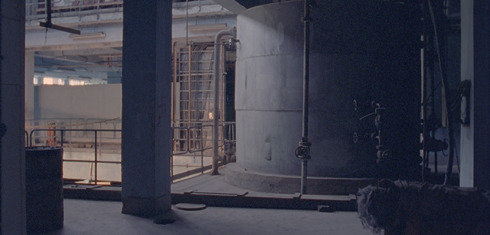Being Singular Plural
dal 1/2/2012 al 5/6/2012
Segnalato da
Shumona Goel
Shai Heredia
Sonal Jain
Vikram Joglekar
Amar Kanwar
Mriganka Madhukaillya
Kabir Mohanty
1/2/2012
Being Singular Plural
Guggenheim Museum, New York
The group show feturs recent and new film, video, and sound-based works by seven contemporary artists, filmmakers, and media practitioners living and working in India today. The works included in this presentation reveal the quiet principles of practice, process, and perception, while being grounded in a vital social consciousness.

Being Singular Plural offers visitors the unique opportunity to encounter recent and new film, video, and sound-based works by seven of the most innovative and visionary contemporary artists, filmmakers, and media practitioners living and working in India today: Shumona Goel, Shai Heredia, Sonal Jain, Vikram Joglekar, Amar Kanwar, Mriganka Madhukaillya, and Kabir Mohanty. The works included in this presentation reveal the quiet principles of practice, process, and perception, while being grounded in a vital social consciousness. This timely and discoursedefining exhibition is oriented toward coproducing new work, facilitating research, and assembling a community of practitioners.
Following the Deutsche Guggenheim iteration of this exhibition-in-progress in Berlin, the New York presentation consists of seven context-specific projects, a majority of which have been specially conceived of or coproduced for this occasion. They are dispersed across three of the museum’s Annex Level galleries as well as in the New Media Theater and along the museum’s exterior. Philosopher Jean-Luc Nancy’s notion of “being singular plural” provides the exhibition’s structural framework. Recognizing the interconnectedness of all beings, the selected films, videos, and interactive sound installations invite visitors to reassess conventional boundaries between such categories as fiction and non-fiction, art and cinema, the still and moving image, documentation and poetry, and objectivity and subjectivity. By manipulating sound, image, and text in experimental ways, these practitioners shift viewers’ positions from passive spectatorship to active participation—to places where the “we” of “being together” is in the immediate here and now.
Desire Machine Collective (Sonal Jain and Mriganka Madhukaillya), whose name derives from the philosophy of Gilles Deleuze and Félix Guattari, seeks to redirect attention toward careful looking, watching, and listening. The collective has installed, on the exterior of the museum, an interactive, round-the-clock public artwork Trespassers Will (Not) Be Prosecuted (2012), inspired by sounds collected in a sacred forest in northeastern India. The exhibition also includes two moving-image works on Annex Level 5:Residue (2011), a 35 mm film shot in an abandoned power plant in the outskirts of Guwahati, Assam, and Nishan (2007– ), a four-channel video installation akin to a miniature painting in its microcosmic rumination of time and space, as experienced in a derelict apartment in Srinagar, Kashmir.
Shumona Goel’s films investigate the stories of people who often go unheard or events that go unwitnessed. For Being Singular Plural, she and codirector Shai Heredia present, in the New Media Theater, I am micro (2011), a 35 mm black-and-white film that celebrates small-scale independent filmmaking and collaboration as it reveals the inner-workings of filmmaking and exposes the conditions of creativity (the filmmakers had to unexpectedly shift production from 16 mm to 35 mm owing to the closure of several film labs internationally, a fate made public through the work of artist Tacita Dean). Amar Kanwar’s complex films and videos are fragmented narratives of violence, displacement, and resistance told through lyrical images and texts, which elicit a compassionate response. Kanwar’s 19-channel video installation on Annex Level 2, The Torn First Pages (2004–08) documents the ongoing struggle for democracy in Burma as it envelops viewers in multiple spatial, emotional, and temporal zones. The presentation also includes a small reading area, where visitors can access a “living archive” of news articles on Burma, updated on a regular basis throughout the run of the exhibition. These articles remind us of the continuing historical reverberations of these stories and events.
Kabir Mohanty also encourages alternative visual and auditory experiences. Mohanty’s approach stems from a filmmaker’s sensibility but moves beyond this framework to develop an innovative vision for video. On Annex Level 7 he screens the recently completed epic video Song for an ancient land (2003–12) over four hours, while stressing the haptic and the physicality of video. Mohanty’s sensitive sound installation nearby, In Memory (2009/12), made in collaboration with sound designer and engineer Vikram Joglekar, invites visitors to interact with a Foley pit that mixes live sounds with prerecorded tracks. The installation overall plays with ideas of distance and proximity, interiority and exteriority, and singularity and communality, traveling to the heart of Nancy’s philosophy.
T. J. Demos, in reference to the first iteration of this exhibition, wrote: “By reorganizing aesthetic experience, these artworks compel us to transition from recognizing the self’s fundamental social being to considering its ethico-political imperatives.”
—Sandhini Poddar, Associate Curator, Asian Art
Image: Desire Machine Collective (Sonal Jain and Mriganka Madhukaillya), Residue, 2011 (detail). 35 mm film with sound, 39 min., looped. Courtesy the artists
Guggenheim Musem
1071 Fifth Avenue (at 89th Street) - New York
Hours: Sun–Wed 10 am–5:45 pm
Fri 10 am–5:45 pm
Sat 10 am–7:45 pm
Admission: Adults $18
Students and Seniors (65 years +) with valid ID $15
Children under 12 Free
Members Free



